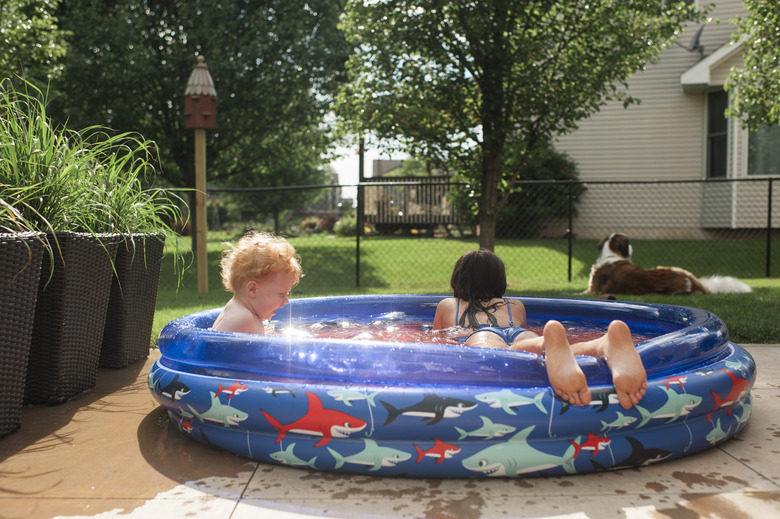How To Repair A Hole In A Kiddie Pool
Both inflatable kiddie pools and the hard plastic type may develop leaks, but the good news is, they're often repairable. There's a fair chance the inflatable pool came with a repair kit including a patch, but if not, use a repair kit designed for vinyl pools and pool floats and sold at most home improvement or pool-supply stores. Hard plastic pools are a bit trickier to repair, but a heat gun and careful handiwork do the job quite well.
Patching Inflatable Pools
Patching Inflatable Pools
If you know where the leak is, circle it with a washable marker, marking it on the outside of the pool if the leak is in the area that holds water. If it's an air leak and you aren't quite sure where it is, put a few squirts of dish soap into a spray bottle of water, then spray one small area at a time. Bubbles come out of the leak area through the soapy solution when you've found the right spot. Once you've found the leak, wipe the soapy water off, then mark the spot.
If it's an air leak and not underwater, you won't have to drain the pool, but if the leak is underwater, drain the pool and let it dry completely. Wipe off the affected area with rubbing alcohol on a paper towel, or use sanitizing wipes; then let the pool dry again. Reinflate the pool, as it's easier to apply the patch that way and it ensures the patch fits properly when the pool is fully inflated. Don't fill the pool with water yet.
Cut the patch so it's round or at least has rounded corners, and so about 2 inches of material extends beyond any part of the hole or slit. Apply the vinyl repair glue that came with the repair kit around the hole, as directed on the glue tube; ideally the glue and patch go inside the pool if it's a water leak. Smooth the patch over the vinyl adhesive, then press it down for a few minutes, or as indicated on the repair kit or the adhesive tube. Allow the adhesive to dry as long as recommended on the package before filling the pool with water.
Repairing Hard Plastic Pools
Repairing Hard Plastic Pools
Hard plastic kiddie pools are often made of HDPE, or high-density polyethylene plastic, indicated by a #2 in a recycling symbol. It's the same plastic used to make containers for liquid laundry detergents or shampoo bottles. Heat fusion is one method that works well to seal holes or cracks in HDPE. Depending on the hole, you may be able to simply heat and slightly melt the area to make its own patch, or use a scrap of HDPE of a similar thickness and color, ideally.
Clean the damaged area with rubbing alcohol and allow it to dry. Heat the area with a heat gun until the plastic looks shiny or almost wet, but not long enough to melt the pool. Heat guns warm things up very fast, so use as little heat for as short a time as possible, and avoid touching the heated area or the tip of the heat gun. If working without a homemade HDPE patch, smooth the area with the bowl of a metal spoon you no longer use for foods. Wear heavy-duty work gloves while doing this.
If using an HDPE patch, warm it up a bit as well, using metal tongs to hold it as you heat it, or simply put it on a brick or concrete block while heating it. Use the tongs to hold it in place on the pool while another person smooths the materials together with the spoon. For either the patched or patchless repair job, use short bursts of heat while smoothing the area out to completely seal the old hole or crack. Allow the area to cool completely before touching it.
